
Be their voice. Keep them safe. It’s our responsibility to speak out about the injustices we see for those who cannot speak for themselves.
Report animal abuse to Loudoun County Animal Services: 703-777-0406 (Can be done anonymously)
If it’s an emergency after hours you can call:
Loudoun County Sheriff: 703-777-1021
Leesburg Police: 703-771-4500
It’s important to understand the signs of animal neglect, whether it’s intentional or not, and to report it for the sake of the animal. The American Humane Association provides these key signs of neglect to watch out for:
No shelter: Animals need protection from the elements while outdoors to ensure their welfare and well-being.
A tight collar: Not increasing the size of a collar as an animal grows causes injury, strangulation and death.
Lack of grooming: Without regular grooming, a pet, especially a long-haired one, can get massive matting and sores.
Mange: Mange, caused by tiny parasites, leads to itching, loss of hair and sores from scratching and biting to relieve the irritation. Mange is easily treated with medicated baths.
Starvation: Starvation is caused not only by lack of food, but also by improper food, untreated disease and parasites (like worms).
Tick or flea infestations: Such a condition, if left untreated by a veterinarian, can lead to an animal’s death.
Injuries: Untreated wounds or obvious signs of injury often means the animal is in constant pain.
Aggression: Animals who cower in fear or act aggressively when approached by their owners are not in a safe environment.
Learn to recognize the indications of animal cruelty, and immediately report it to local animal control or law enforcement. Without information from concerned citizens, law enforcement would not be aware of most instances of animal abuse.
Did you know that dogs and cats do not sweat like humans? Their main sweat glands are located on their paw pads and are not very effective at cooling them off. With summer now upon us, it is important to understand how hot weather affects our pets and how we can help them stay cool.
First, keep your pets out of the heat. This may be difficult for dogs. Most love the outdoors so much, they may not ask to come inside, even when in distress. If unable to keep them in an air conditioned environment, be sure to provide cool shade or shelter for your pets. Clean, cool water should always be accessible to pets that spend time outdoors during summer months. Note that, effective July 1, 2020, a new Virginia law went into effect preventing tethering outside during extreme weather.
 Take your dog on walks at dusk or dawn, when it is light enough to be seen by others, but still cool enough for a walk. Check the pavement you are walking on with the back of your hand. If your hand burns after a few seconds of contact, so will your dog’s foot. If it is too hot for you, it is much too hot for your pet.
Take your dog on walks at dusk or dawn, when it is light enough to be seen by others, but still cool enough for a walk. Check the pavement you are walking on with the back of your hand. If your hand burns after a few seconds of contact, so will your dog’s foot. If it is too hot for you, it is much too hot for your pet.
To cool down, dogs will often pant to rid themselves of excess body heat. Panting is normal for most dogs but be aware of the signs of abnormal panting. Cats tolerate hot weather a little better than dogs but can suffer from heat stroke. They often choose lying in cooler areas, drinking cool water, and adjusting their body positions.
If you notice your pet is overheating, gradually reduce their body temperature. Use ice packs, cold towels, or apply cool (not cold) water to the head, neck and chest, let your pet drink small amounts of cool water or lick ice cubes and move the pet into shade or air-conditioning. NEVER try to quickly cool a pet by dunking them in cold water. This can drop their body temperature too quickly and send them into shock.
Contact your vet immediately if your pet shows any of the following signs:
- Heavy panting
- Glazed eyes
- Rapid pulse
- Vomiting
- Fever (the normal range in dogs is 101-102 degrees, cats is 99.5-102.5 degrees)
- Unsteadiness or a staggering gait
- A deep red or purple tongue
Lastly, never leave pets in a parked car. Even on cool days, such as 70 degrees, a car’s internal temperature will jump to 90 degrees in 10 minutes and over 110 degrees within an hour. At 85 degrees, the car will reach 102 degrees in 10 minutes, continuing higher with more time. On 90 degree days, the car will quickly escalate to over 110 degrees. Cracking windows does not prevent a car from getting dangerously hot, even in cool temperatures.
For additional information on keeping your pets safe and comfortable during warm weather, please click on the following link: AMVA Warm weather pet safety

By Heather Nokes
“Kitten season” refers to the period from early spring to late fall when most kittens are born. This phenomenon is mostly due to warmer weather allowing stray or outdoor cats to venture out and begin procreating. Female cats become sexually mature as young as five months of age. In addition, because the gestation period for cats is only about two months long, they can have several litters in one year!
As kitten season ramps up, local shelters and rescues, like the Humane Society of Loudoun County (HSLC), are in dire need of kitten and cat fosters.
Why you should foster

Andi, pictured with little Ramone, has fostered over 130 cats and counting!
Fostering kittens is a rewarding experience. As a foster, you save lives while enjoying all the adorable antics that make kittens irresistible. One of HSLC’s expert kitten fosters, Andi, has been fostering cats and kittens—over 130 in total—with her husband since 2012! She had this to say about her fostering experience:
“The best part [about fostering] is being able to watch them go from sickly to healthy or from angry/scared, hissy-spitties to lap-loving cuddlebugs.”
What to know before fostering
Andi states that while kitten fostering is fun, it can also be a lot of work. You must watch the little souls closely to ensure they stay safe. If something seems odd, do not be afraid to ask questions (HSLC has an awesome foster coordinator who can help!) Be sure to love them unconditionally, and be happy to see them go to great homes.
What you need to foster
Kittens should be isolated from other pets in the home until vetted and given a clean bill of health. This is why setting up a “home base” for them is important. If they are young, a large dog crate will work; if older, an entire room would be a better fit.
Your home base should consist of:
- Clean, fresh bedding that is easy to change and wash.
- Soft surfaces that are not too high up, nothing that a kitten could get stuck in (trash can, boxes).
- A shallow litter box with a small amount of non-clumping litter.
- Shallow water and food dishes that are easy to clean.
- A healthy and safe environment for their foster kittens; any cleaning products should be removed from the kitten foster room.
- Small, soft toys that are not easily ingested or torn apart.
Kitten Veterinary care
The Humane Society of Loudoun County will pay for the veterinary care of its kittens. The first couple of vet visits often include deworming and/or flea treatment. If the kittens are healthy enough, vaccines and FeLV/FIV tests may be conducted. HSLC also spays/neuters around 4 months of age. More complicated reasons for a vet visit include diarrhea, dehydration and upper respiratory infections. For these conditions, medications may be sent home with the foster to give the kitten regularly. A healthy kitten is a happy kitten!
Saying goodbye
Saying goodbye may be the hardest part of fostering. It is important to remember that this is why you fostered, for a happy, healthy kitten to find a forever home!
Interested in giving cat or kitten fostering a try? Complete a no-obligation application today!

By Carly Sanders
It’s no secret that animals like food. Some animals really like food, and most dogs and cats fall under that category. When you’ve got a pet that’s quick to scarf down scraps and isn’t too picky about what they’re made of, it’s important to know what is and isn’t safe.
Even pets who aren’t big eaters can still be at risk. Some harmful compounds can enter their bloodstream through contact with their skin, so it’s important to be aware of all products that you bring into your home that your animals may have access to.
Here at the Humane Society of Loudoun County, we want to help owners keep their beloved pets safe. Knowing about potential dangers around the house is a big part of that. By now, most of us have heard that things like chocolate and grapes are not safe for dogs, and it’s pretty common knowledge amongst cat owners that lilies can be harmful to cats. But did you know about these five lesser-known hazards?
Raw bread dough
There’s nothing like home-baked bread. While most humans prefer it after coming out of the oven, our animals are often less discerning. Make sure to keep that pizza dough far away from your pets, as dough containing yeast can continue to expand in the stomach after swallowing. This can lead to stomach stretching, a condition that can be fatal in severe cases.
Not only that, but as yeast ferments, it produces alcohol which can lead to alcohol poisoning.
Cooked bones
This one may seem surprising, but if you’re going to throw your dog (or cat!) a bone, make sure it’s a raw bone specifically meant for chewing. Cooked bones are more brittle than raw and can splinter more easily when broken by your pet’s teeth. When swallowed, sharp fragments can cause damage to the digestive tract.
If your pet loves the smell of fried chicken as much as my dog does, make sure to pay special attention and don’t leave that bucket unguarded!
Essential oils
Sniffing that bottle of tea tree oil might improve your headache, but keep it away from your pets, please! Many common plant-based essential oils, including tea tree oil, are toxic to cats and dogs. Other examples include wintergreen oil, eucalyptus oil, pine oil, and pennyroyal oil. These oils are harmful to cats and dogs when eaten and when applied to the skin.
Effects vary depending on the type of oil and the amount ingested. Symptoms range from stomach upset in mild cases to seizures and liver failure in more severe cases.
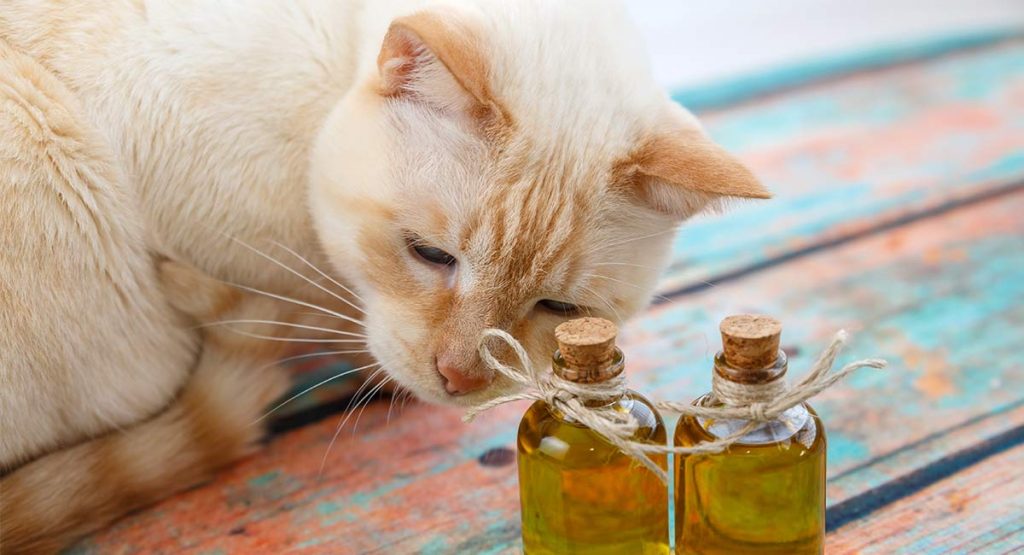
Rogaine
If you’re treating hair loss with the topical product Rogaine, take care to keep it away from anywhere your pets might like to hang out. Minoxidil, the active ingredient in Rogaine, is highly toxic to cats and dogs. Exposure can cause a dangerous drop in blood pressure for our four-legged friends.
Like with essential oils, Rogaine can affect your pet both through eating and through application to the skin. Many reported cases involve cats licking someone’s hand or head where the product was applied. Even small amounts can be harmful, with many reported cases involving only a few drops or licks worth of the product.
If you’re using any products containing minoxidil, be very careful to keep the product itself far away from your pets and take extra precautions to wash residue from your hands and any surfaces that they might come in contact with.
Xylitol
Xylitol, a common artificial sweetener, is highly toxic to dogs. Xylitol is found in many sugar-free food products and chewing gums, but it can also turn up in household products such as vitamins and toothpaste.
When it comes to cats, research is less plentiful. Serious side effects appear to be less common in felines, but more studies are needed. For now, we recommend playing it safe by keeping the ingredient away from pets of all varieties.
As for dogs, it’s well documented that xylitol causes severe low blood sugar, even in small doses. Higher doses can cause acute liver failure. Make sure to check for the ingredient in any new products you bring into your home, and pay special attention to anything labeled sugar-free or reduced sugar.
If you have reason to believe that your pet has been affected by any of these hazards, contact your emergency vet immediately to seek treatment. Knowing what to look for is the first step in protecting your loved ones, animals included! Make sure to be aware of what you or others are bringing into your home, and take precautions to keep anything potentially harmful far out of your curious companions’ reach.

By: Heather Nokes
To foster is to save a life. Foster parents are in charge of the day-to-day care of their foster animal. They teach them what it means to be loved and prepare them to be adopted by their forever family.
The Humane Society of Loudoun County took in a dog named, Ulysses, who had been transported from Roanoke, VA. Without the help of HSLC and his foster, Sarah, Ulysses may not have gotten the freedom ide he deserved and a second chance at life. Sarah is a new foster for HSLC and gave us a first-hand account of her journey as Ulysses’ foster mom.
How did you hear about HSLC?
“I heard about HSLC when I was searching for volunteer opportunities. I have been around animals my whole life and wanted to reduce the number of animals being euthanized. Specifically, I was looking for an organization close by that I could be a part of. ”
What made you want to foster?
“I wanted to be an active part of helping at-risk dogs and cats. They often come from a stressful environment and need a quiet place to unwind and learn how to be a [companion animal]. They may have been homeless and shuffled around for a long time, and many of them are scared. By fostering, I am being understanding of the [animal’s] previous situation and helping them trust again so they can be successful in a forever home.”
Was it easy to sign up as a Foster with HSLC?
“It was very easy to sign up. I provided references and they did a simple interview and (virtual) home visit with me. For someone experienced with animals, it’s an easy process. HSLC gives plenty of resources and shares vast knowledge with new fosters to help them be successful.”

Tell us about Ulysses!
“Ulysses is a sweet, happy-go-lucky hound mix who adores everyone he meets. He followed me everywhere around the house and yard, loving every bit of attention. As a young dog, he enjoyed the large yard and regular exercise we were able to provide. He also loves to snuggle at the end of the day in bed. He was perfect for watching movies with!”
What was your favorite part about fostering?
“My favorite part of fostering is definitely the bond we create with the animals. They truly appreciate us giving them good food, water, and a soft place to rest their heads. I also really enjoy training them with lots of good treats. Ulysses especially loved when I’d train him using peanut butter as the reward!”
What was your least favorite part?
“My least favorite part is probably the goodbye. You get attached to foster animals, so it is bittersweet when they go to a good home. But, I would definitely foster again! I plan to, for both cats and dogs.”
Is there anything else you would want potential fosters to know?
“One thing I’d want fosters to know is that it takes time for [an animal] to become acclimated in their home. They may cry at night or be shy for the first few days or even weeks. It takes patience to help them adjust to a new lifestyle, but it is so rewarding.”
It is because of Sarah that Ulysses got a happy ending and was adopted! The Humane Society of Loudoun County does not have a facility to house animals and solely relies on its network of caring fosters. If you are thinking of becoming a foster with HSLC or have questions about fostering, you can use this link: https://humaneloudoun.org/programs/foster/ or email foster@humaneloudoun.org.

By Hannah Feeley
I recently had the pleasure of speaking with three fosters for the Humane Society of Loudoun County (HSLC). They each shared their stories and advice for new foster parents.
Meet Tyler
Tyler and his roommate, Katie, started fostering during the pandemic and have fostered 14 cats thus far with HSLC. They initially started fostering to cope with COVID-19 pandemic isolation and the emotional toll but continue to foster because it’s meaningful and fun.
Tyler mentioned the potential financial toll of fostering. Although HSLC covers all vet care expenses, it relies on the community to donate food and supplies. Otherwise, the fosters cover these costs which can add up. But Tyler and Katie have felt that the costs are worth it.
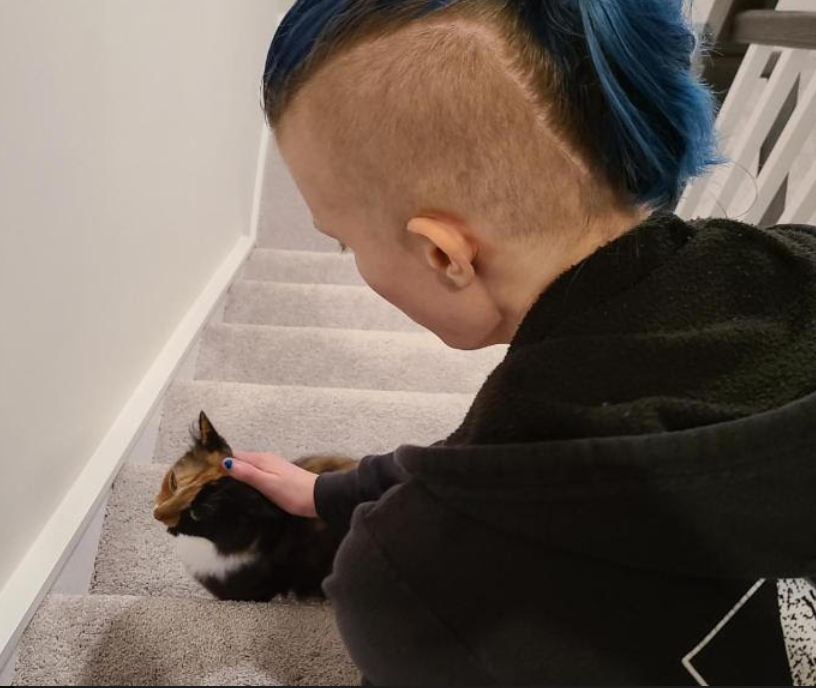
Despite both working full-time, Tyler and Katie still find time to play with and socialize the cats to get them ready for their forever homes. Katie, for instance, sets aside arts and crafts time with the cats.
Tyler recommends that new foster parents reach out to their animal rescue for advice. He highlighted that our HSLC family has given him great guidance with each animal.
Meet Jamie
Jamie and her two daughters recently became short-term fosters for HSLC. She is a homeschool parent, with two senior dogs.
Jamie was volunteering for HSLC as a cat condo caretaker at a local pet store. When the cats in the condos needed a break, her kids encouraged her to take the cats home. Both Jamie and her kids noted the incredible feeling of letting the cats decompress for a few days. Plus, they found the experience to be really fun.
Jamie emphasized that cats do not need a lot of space; whatever room you can provide may actually be more than they’re used to. She appreciates the flexibility of short-term fostering as it allows her to help the animals without making a lengthier commitment.
With the holiday season upon us, HSLC is currently in need of short-term and vacation fosters. So, if you’re considering fostering, this would be the perfect time to give it a try.
Meet Carol
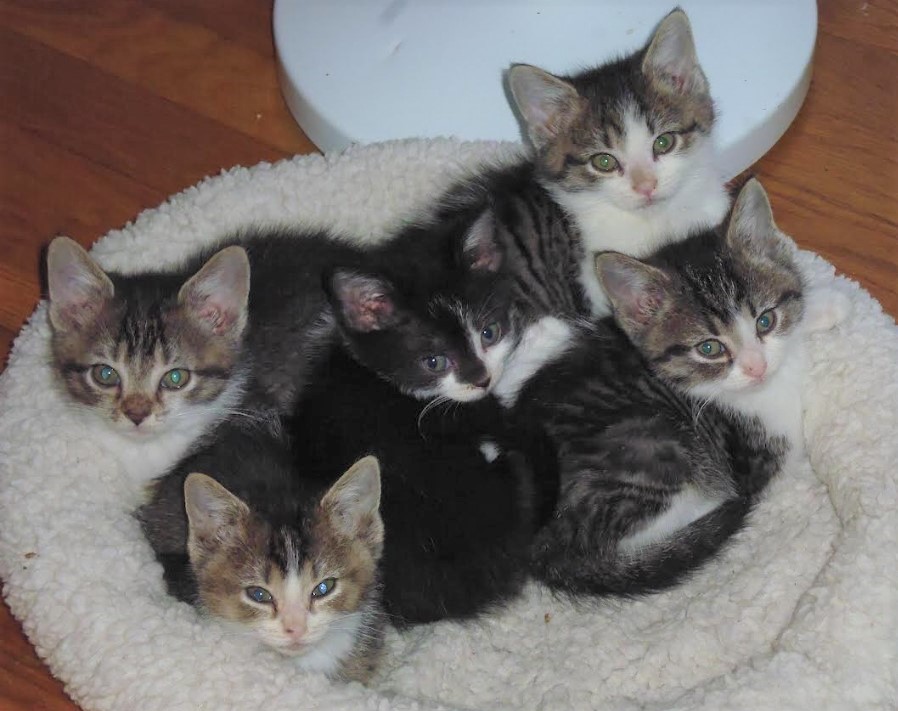
Carol is retired and has fostered cats with HSLC since 2018. Carol was initially introduced to fostering by a friend and hasn’t looked back since.
In explaining to me why she fosters, the joy in Carol’s voice was evident. – she does it because it’s enjoyable. Carol has also made (human) friends by fostering. Each time a foster cat is adopted, she makes a new friend with the adopter who sends updates about the cat’s wellbeing.
As a long-term foster parent who often takes in mistreated animals, Carol’s advice for new fosters is short and sweet: be patient. Spend time with the animals but have the patience to allow them to come out of their shells on their own.
Some people fear they won’t be able to give up the foster animals when the time comes. But Carol’s mindset is different: the more animals she can foster, the more animals she can help find homes. It’s a beautiful process and Carol is enthusiastic about her next foster.
If you’re interested in becoming a short or longer term foster, please contact us at foster@humaneloudoun.org or complete a no-obligation online application.

The Humane Society of Loudoun County (HSLC) is a foster-based rescue—which means we do not operate a physical shelter. Every animal we save depends on the availability of a foster home. Without fosters, we simply can’t take in animals in need. And right now, in 2025, we haven’t been able to take in a single new dog—due to a severe shortage of safe landings.
That’s where you come in.
Fostering is more than just providing a temporary place to crash. It’s a lifeline. It’s the bridge between what an animal’s life was—whether they were abandoned, neglected, surrendered, or at risk in a kill shelter—and the life they deserve in a loving, forever home.
Fostering:
- Helps animals decompress from the stress of shelters
- Increases their chances of being adopted
- Teaches them what love, safety, and routine look like
- Saves lives—literally
And here’s the best part: HSLC covers all medical care, and we’ll match you with a mentor who will support you every step of the way.

Fostering is also flexible. Whether you’re not ready for a long-term commitment or simply want to experience the joy of having a pet in your home, fostering gives you that opportunity.
Right now, we need dog fosters more than ever. Dogs who are waiting in shelters are counting on us—but we can’t say “yes” to them until someone like you says “yes” to fostering.
Please consider becoming a foster hero. You can fill out our no-obligation application here, or help us by spreading the word. Every share makes a difference.
Thank you for being part of the village it takes to save lives.
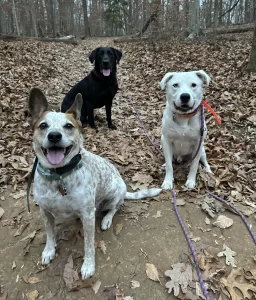

By Heather Nokes
There are several reasons a pet may get lost: bolting out an open door, sneaking under a fence, or just simply wandering off. If this were to happen to you, how would you respond? Most pet owners would worry about the well-being of their pet, and rightfully so! Some relief may be found in remembering they have a collar or ID tag on but there is a chance those could come off.
This is where a microchip comes in.
What is a microchip and how does it work?
A microchip is a small glass cylinder (about the size of a grain of rice) that contains a chip activated by a scanner. When scanned, the chip presents a unique number which is known as the microchip number. Therefore, when a lost pet is located, any veterinary hospital, shelter, or rescue is able to scan them with a universal scanner. If a chip is located, the scanner will beep and display the unique number on the screen. This number can then be input into any microchip website and the contact information registered to the chip will display.
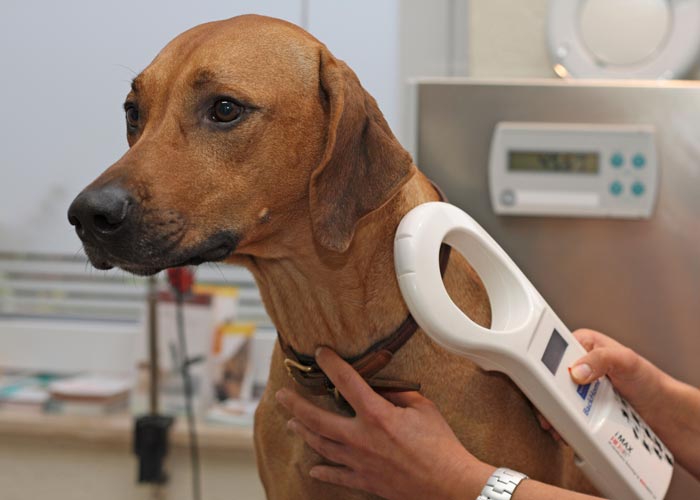
Can you track your pet with a microchip?
The short answer is no. Because the chip can only be activated by a scanner, it cannot be located virtually.
How can you get your pet microchipped?
Your veterinarian should be able to implant your pet with a microchip at your next visit! If for some reason you cannot get one at your vet or it is too costly, most shelters and humane societies have them available for a low cost and may even administer them for you. Most people trained properly in animal care are able to safely implant a microchip.
How is a microchip implanted?
The procedure itself is simple. The microchip is incased in a sterile syringe with a needle on the end. The needle is inserted just under the pet’s skin, often between the shoulder blades. The syringe is then pushed which plunges the microchip under the skin. Simple as that! The pet often only feels a slight pinch during this time, not much different than getting blood drawn. Once the microchip is under the skin, the pet cannot feel it.
What else is there to know about microchips?
- There are several companies that make microchips but no matter which one you choose, a universal scanner will be able to scan them all.
- Some microchips have technology where they can gauge the body temperature of the animal.
- Microchip registries can make it easy to keep track of your pet’s health records.
If you are still not convinced that microchipping your pet is the right decision, ask your veterinarian for more information.
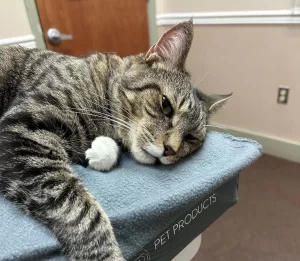
Sometimes, the difference between life and death for an at-risk animal isn’t a major rescue operation or a miracle—it’s a single person saying “yes.”
That was the case for Nugget, a sweet, four-year-old cat who arrived at Blue Ridge Veterinary Associates with a life-threatening urinary blockage. His owner, unable to afford the necessary treatment involving catheterization, was out of options. Nugget’s future looked heartbreakingly bleak.
But one person changed everything.
Andrea, a Blue Ridge employee and previous HSLC adopter, couldn’t ignore the appeal that came her way. “When the plea for help with Nugget went out, my heart just sank,” she shared. “Several rescues had already turned him down because they had no funds, fosters, etc.” But Andrea wasn’t going to let Nugget’s story end there. She reached out to Tracy, Director of Animal Care Operations at the Humane Society of Loudoun County (HSLC), hoping there might still be a chance.
Tracy’s response was immediate and positive—but there was a catch. “She didn’t have a foster,” Andrea recalled. “I thought, oh no, that’s not going to stop us from getting this guy help.”
So Andrea did what heroes do: she stepped up.
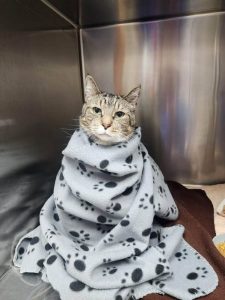
With HSLC’s support, she opened her home to Nugget, giving him the safe landing he desperately needed. “Nugget is doing great! Eating, drinking, using the litterbox. Getting some rest—he likes to lounge,” Andrea said. “He likes to be loved on, head scratches and pets so far. I get the feeling he wasn’t given a lot of affection in his previous life.”
From day one, Nugget was the perfect patient—calm, cooperative, and full of quiet charm. He quickly became a favorite at the clinic, capturing hearts with his gentle spirit.
This isn’t Andrea’s first time fostering, but she says it felt like fate. “It was just meant to be. I just happened to check my Slack feed, Tracy just happened to check her texts, the planets aligned,” she said. “I love animals, my husband loves animals, and he refers to himself as the ‘Pied Piper of cats.’”
Fosters Needed
Andrea believes that fostering is one of the most rewarding things a person can do. “If you have the time, space, and heart for helping animals, take that leap,” she urges. “There is such a need out there, so many animals that need a loving place to land before they find their forever home. Open your heart and your home.”
Nugget is alive today because someone said yes.
You can be that someone.
You can be the hero in an animal’s story.
Apply to become a foster with the Humane Society of Loudoun County today. Because every animal deserves a soft place to land—and maybe, a window seat to call their own.
Want to know more about fostering or start the application process? Visit our website today!
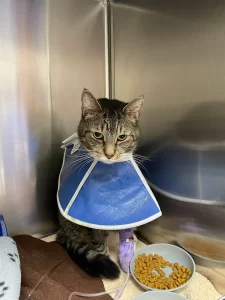

At the Humane Society of Loudoun County (HSLC), every animal we help is a life changed—sometimes even saved. But we can’t do it alone. That’s why we’re inviting you to take one simple step that can make a world of difference: become a Pet Partner through monthly giving.
More Care for Them—All Year Long
As a Pet Partner, your monthly gift provides lifesaving funds to dogs and cats in need—every single day, all year long. Whether it’s covering emergency vet care, food, or spay/neuter surgeries, your consistent support means we can always be ready to help.
- Small gifts add up. Even $10 a month can provide vaccinations for a pet entering foster care. Imagine what $25 or $50 can do!
- Reliable support. Monthly donations help HSLC plan ahead, knowing how many animals we can take in and care for, thanks to your dependable generosity.
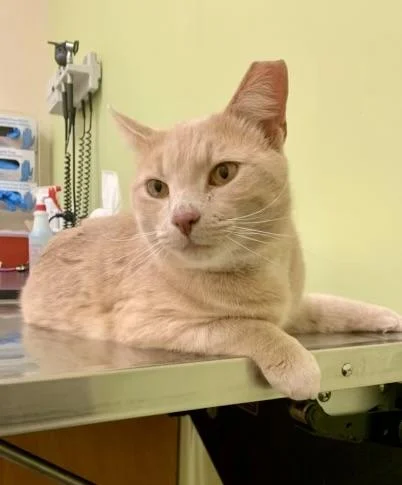
More Convenience for You
We’ve made giving easier than ever—so you can focus on the love you’re giving without the hassle.
- Your gift is automatically deducted each month.
- No checks to write, no stamps to find.
- Manageable contributions that fit your budget.
- Tax deductible and easy to track at the end of the year.
- You’ll be recognized as one of the animals’ most loving and reliable friends!
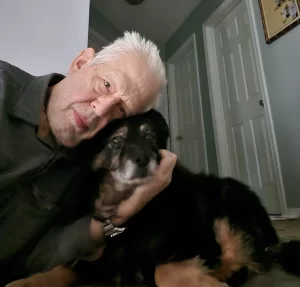
Get Started Today
Monthly giving is one of the most effective ways you can support HSLC. It’s convenient for you—and absolutely life-changing for the animals we serve. Your ongoing support ensures we never have to say no when an animal needs us.
Become a Pet Partner today. Once you click through, simply select your recurring donation amount and set the donation frequency to “monthly”. Your donation will be automatically charged to the credit card of your choice each month until you cancel, and you’ll be part of a compassionate community committed to helping more animals. Thank you for your kind and lifesaving support!
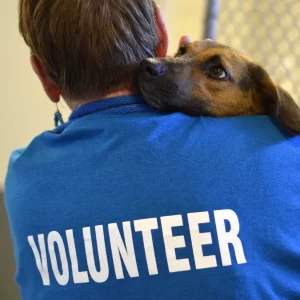
By Uchenna C. Ukeke
Volunteering is not just a simple act of kindness that benefits the community. It can also benefit you personally and professionally. And the best part? It doesn’t require wealth, fame, or perfection—just willingness. Discover how volunteering can unlock purpose and fuel growth in your life, while also enhancing the lives you touch.
Personal Growth
- Developing Emotional Intelligence: Volunteering exposes you to different perspectives and challenges, helping you develop empathy and resiliency. This increased emotional awareness improves your relationships and boosts your ability to connect and communicate with others in your life.
- Boosting Confidence: Volunteering is a powerful confidence booster. By dedicating your time and efforts to helping others, you gain a deep sense of accomplishment and self-worth. Seeing the direct impact of your work reinforces the value of your contributions, and this recognition enhances your belief in your abilities. Volunteering also helps you build new skills which can also boost your self-esteem.
- Finding Purpose and Fulfilment: By supporting causes that matter to you, like animal rescue, you become part of something greater than yourself. Volunteering provides meaning and fulfilment knowing that your efforts are making a real difference in the lives of others.
- Making Friends: Volunteering is a great way to meet new friends. As a volunteer, you’ll interact with people from diverse backgrounds and yet share a common interest. Some volunteers remain friends for life.
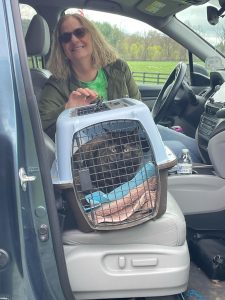
Professional Benefits
- Enhancing Your Resume/CV: Volunteering offers valuable hands-on experience that boosts your career. Whether you are managing a project or running an event, volunteering provides opportunities to refine existing skills and develop new ones, including leadership, teamwork, time management, and problem-solving. This practical experience can help fill gaps in your resume, especially if you’re changing careers, entering the workforce, or looking to climb the corporate ladder.
- Expanding Your Network: Volunteering gives you the opportunity to meet people from various professional backgrounds, whether it’s with fellow volunteers, community leaders, or like-minded professionals. These connections help expand your network and are valuable for both personal and career growth.
- Building Career Credibility: Volunteering demonstrates your commitment, passion, and reliability. It shows that you’re proactive, socially responsible, and willing to contribute beyond your job. These qualities not only benefit the causes you care about but also help your professional growth.
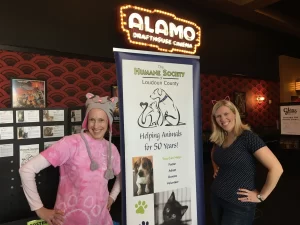
Volunteering with HSLC
Volunteering with the Humane Society of Loudoun County (HSLC) offers you the chance to make a real difference—for animals, for the community, and for yourself. HSLC provides opportunities for meaningful engagement that supports both personal development and community impact.
Ready to find your purpose and grow through giving back? Click here for HSLC’s most pressing needs. If you don’t see something of interest, please complete an application and we will work to find a role that’s right for you!
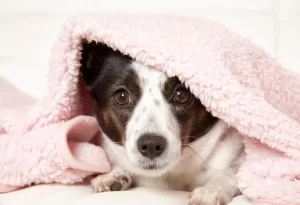
By Uchenna C. Okeke
Natural disasters like floods, winter storms, hurricanes and tropical storms can be overwhelming. Our companion animals depend entirely on us for protection in times of crisis so we must be prepared to handle the situation before, during and after it occurs. Different disasters pose unique risks, so knowing how to protect your pet in each situation is important. Let’s explore the steps you can take to keep your pet safe.
BEFORE
Know Where to Go Before You Have to Leave
It’s important to have an evacuation plan that includes your pet. Research nearby pet-friendly shelters, hotels, or safe places ahead of time, as not all shelters accept animals. Keep a list of veterinary clinics, animal shelters, or friends who can help if needed. Advance planning helps you act quickly and avoid last-minute stress.
Pack a Pet Emergency Kit
Just as you prepare an emergency kit for yourself, it’s vital to have one for your pet. Your pet’s kit should include:
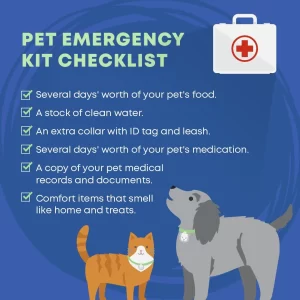
Ensure Proper Identification
Disasters can separate pets from their owners, making identification vital. Ensure your dog wears a secure collar with an updated ID tag. All pets should be microchipped with your current contact details as this greatly increases the chances of being reunited if you become separated.
DURING
Evacuate Safely
Disaster conditions can worsen quickly, so keep your pet in a secure carrier or on a leash at all times to prevent them from running away in fear. If evacuating by car, ensure they are safely restrained to prevent panic-driven escape attempts.
Keep Your Pet Calm in the Chaos
Pets pick up on human emotions, so staying as calm as possible will help reassure them. If you’re sheltering in place, keep your pet in a safe, enclosed area away from windows, loud noises, and dangerous objects. Provide comfort with familiar items, speak soothingly and avoid sudden movements to help ease their anxiety.

AFTER
After the disaster, your pet may still face health risks like injuries, dehydration, or emotional distress.
Check for injuries
Inspect your pet for cuts, burns, or breathing difficulties. Seek veterinary care if needed.
Provide a stable routine
Keeping their food, sleeping, and play schedules consistent helps them feel secure.
Watch for behavioral changes
Some pets may become anxious or fearful after a traumatic event. Be patient. Pets, like humans, need time to heal after trauma.
Protecting Pets in Specific Situations
Floods
If you live in a flood-prone area, plan evacuation routes in advance. During a flood, keep pets indoors in an elevated, safe space. If evacuating, use a secure carrier or leash and move to higher ground. After the flood, check for mold, toxic chemicals, and sharp debris that could harm your pet.
Winter Storms
Winter storms bring cold, snow, and ice that can harm pets. Keep them indoors in a warm, dry area. If they go outside, limit their time in the cold, wipe their paws, and use a coat or booties if needed. Stock up on food, water, and supplies in case of power outages, and be ready to evacuate if needed. For more information, read 12 Cold Weather Safety Tips.

Hurricanes/Tropical Storms
Strong winds and flying debris pose serious risks. Keep your pet in a secure room, away from windows and unstable furniture. If evacuating, transport them in a sturdy carrier or on a leash. After the storm, inspect the area for hazards before allowing them outside.
Conclusion
Natural disasters can be traumatic for pets as they are for humans. Unlike us, pets don’t understand what’s happening—they simply sense the fear, chaos, and sudden changes. In those critical moments, every second counts and with the right preparation, you can protect yourself and loved ones, including your pet. Always remember that when disaster comes, being ready can make all the difference.
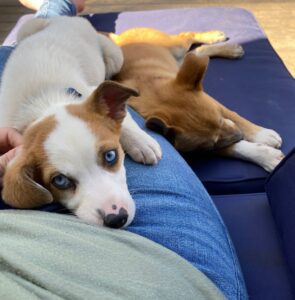
By Uchenna C. Okeke
Many people hesitate to foster because they fear becoming attached. If you’ve ever thought about fostering a rescued animal, this concern may have crossed your mind. But, is this fear of attachment really a reason to hold you back from fostering? What you discover may change your mind forever.
Attachment is Strength
Attachment isn’t a weakness, it’s a strength! It means you’re making an impact. It shows you have the love and compassion to change an animal’s life. Fostering isn’t just about providing food and shelter; it’s about offering love, stability, and care to an animal in need. The bond you form isn’t something to fear, it’s part of the journey.
As dog and cat foster caregiver, Blaire, puts it: “You get attached because you have a big heart. But part of loving them is wanting to see them find THEIR people, and understanding that if you keep them, you can’t help more. Always go into it knowing this is only temporary, ‘goodbye is the goal.’ The peace of knowing they found their forever home really does quell the sadness of letting go.”
Every Goodbye Means Another Life Saved
Letting go is never easy, but it can be deeply rewarding. Each time you foster, you not only help one cat or dog, but you also make space for another animal in need. The beauty of fostering lies in this ongoing cycle of love and rescue.

While goodbyes can be tough, remember that your role as a foster parent is key to saving lives. And if you find the perfect match for your family, adoption with HSLC is also an option! Many fosters choose to adopt, and that’s part of the journey, too.
Why Foster?
Fostering is a powerful way to make a difference in the lives of animals. It offers pets love, care, and a secure environment – often something they have never experienced before. By opening your home, you help them build confidence and develop social skills, preparing them for their future forever family.
Diane, who has been fostering for 20 years, says: “Fostering allows me to save a homeless dog. Every time I bring one in, I’m not just helping them – I’m also creating space for another dog at the shelter (or rescue). Without fosters, rescues wouldn’t have the ability to take in more animals. That’s the core of why fostering is so vital.”
Diane’s experience highlights how the impacts of fostering far surpass the difficulty of saying goodbye.

Flexible Fostering Options
Fostering can fit into various lifestyles. Whether you can commit long-term or just for a short time, every effort matters. Consider these options:
- Short-term fosters: If you can only foster for a few weeks, you can still make a huge difference.
- Vacation fosters: Providing a temporary home for a dog or cat while another foster is out of town is a great way to test-drive fostering.
- Fospice foster: Giving a senior or terminally ill dog or cat love and comfort in their final months is often seen as a privilege.
Will You Foster?
The Humane Society of Loudoun County is only able to save a handful of dogs in any given year because of a shortage of fosters. And yet, there are so many dogs that are waiting for their second chances. The only thing standing in their way is available foster homes. Will you be their hero?
Contact us at foster@humaneloudoun.org for more information about fostering or visit the HSLC website to learn more and complete a no-obligation application.

By Uchenna C. Okeke
The classic dog vs. cat debate has been going on for ages – but here’s the truth: the best pet for you depends on YOU! Whether you’re a dog enthusiast or a proud cat lover, the perfect pet for you hinges on factors like your personality, living situation, and lifestyle. So, let’s dive in and explore key considerations to help you choose the ideal companion!
Personality Match
Your personality is a key factor when choosing between a dog and a cat. Do you enjoy constant companionship and engaging in social activities, or do you prefer a more independent and low-maintenance pet? Understanding your personality type can guide your decision.
Dogs: If you’re someone who enjoys social bonds and staying active, a dog might be the ideal pet for you. Known for their loyalty and affection, dogs usually love being surrounded by people and often follow their owners wherever they go. If you enjoy outdoor activities, walks, or training your pet, a dog is a perfect companion. Keep in mind that owning a dog requires time for training and socializing.
Cats: If you appreciate a more relaxed pace and prefer a pet that doesn’t require constant attention, a cat might be a better fit. Cats are famously independent creatures. They’re happy to curl up on the couch or perch by the window, giving you space to do your own thing while still offering the comfort of their company. If you value peace, quiet, and minimal effort when it comes to caring for your pet, a cat’s more independent nature might suit your personality perfectly.

Living Conditions
The space you live in is another major factor in choosing between a dog and a cat. While both animals can make wonderful pets, their needs when it comes to space and environment differ significantly.
Dogs: Generally, dogs require more space than cats, especially larger breeds. If you live in a house with a fenced-in backyard, this is ideal for a dog to roam, play, and get the exercise they need. However, even if you live in an apartment, some smaller or low-energy dog breeds can adjust well to indoor living – provided they get regular outdoor walks and exercise.
Cats: Cats are highly adaptable and can thrive in smaller living spaces, making them ideal for apartments or homes without outdoor areas.. Many cats are happy lounging around, playing with toys, or finding a sunny spot to nap. Cats love to climb and perch, so adding stable shelves or cat trees can keep them entertained.

Lifestyle Considerations
Your daily routine and activity level plays a key role in deciding whether a dog or cat is the right pet for you. Pets have varying needs for attention, exercise, and companionship, so it’s important to match your lifestyle with your pet’s requirements.
Dogs: Dogs require regular walks, playtime, and social interaction. If you have a flexible schedule and enjoy outdoor activities, a dog can be the perfect companion for exercise and fun. However, if you travel frequently or have a busy routine, owning a dog might be more challenging unless you have reliable pet care options. Some breeds require more exercise than others, so choosing the right breed for your activity level is essential.
Cats: With their independent and self-sufficient nature, cats are ideal for those who value independence and flexibility. They’re content with being left alone for longer periods, as long as they have food, water and a clean litter box. Unlike dogs, cats don’t need regular walks, making them a great fit for those with a busy schedule or frequent travel commitments. If you’re looking for a low-maintenance companion that still offers affection and comfort, a cat might just be your ideal match.
There are other factors to consider when adopting a pet including your household budget and children in the home. But if you consider your personality, living situation and lifestyle, you’ll be well on your way to finding the right furry companion for your home. The decision is yours!
Visit our adoption page today to find your perfect match!
Also, be sure to check out 5 Ways Fostering or Adopting Benefits Children
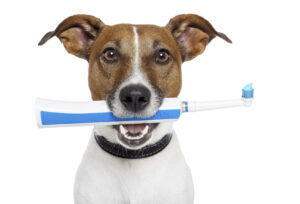
By Kathleen Silver
Giving your pet dental treats is a great way to remove some gunk from their teeth. But it’s not as effective as creating a home brushing routine AND scheduling regular professional dental cleanings. Even with dental treats, bacteria attach to our pet’s teeth over time. In fact, most pets by the age of 2 years have some periodontal disease, which affects the gums and roots of the pet’s teeth.
The hard truth is that dental disease causes significant problems in pets. When even a few years of tartar, plaque, and bacteria have built up and caused inflammation and diseased roots and gums, your pet may already be experiencing chronic life-changing pain. And no responsible pet owner should wait until they see that their pet is in obvious distress or showing drastic behavioral changes before scheduling a dental cleaning.
Don’t Replace a Dental Cleaning with Products
Do you think you can avoid dental cleanings by using products that claim to clean a pet’s teeth? There are great products on the market that improve the smell of breath and help prevent plaque and tartar build-up. But these products do not claim to be a substitute for annual professional cleanings.
Professional dental cleanings range from $250 – $1000 per animal when performed by a general vet practitioner; higher with a board-certified veterinary dentist. Unfortunately, most pet insurance policies do not cover the cost of cleanings. And, they will not cover the cost of dental disease if a pet has not had regular cleanings, as this would be considered a pre-existing condition. So, as pet owners, we must consider dental care a personal routine and a cost associated with pet ownership.
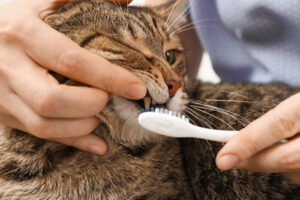
Make Brushing a Routine
Make brushing your pet’s teeth an experience where you bond with your animal. For example, brushing routines work great after a walk or nap when your pet is most relaxed. And being patient is essential when teaching your pet new behavior patterns. It might not work on the first, second, or third try, but it’s necessary to keep at it and make it as enjoyable as possible for your pet. It could be a few weeks until your pet settles into the routine ultimately, so keep at it!
Have you heard the term “baby steps” regarding training a pet? It’s no different for home dental cleaning. First, start teaching your pet by setting out the toothbrush and letting your pet taste toothpaste. Doing this lets your pet become familiar with the implements and not fear foreign objects. Then, start teaching your pet to be used to you touching their mouth. Do this when the pet is relaxed. Next, rub your pet’s teeth with your finger. Gradually, switch to putting toothpaste on your finger and then to putting the toothpaste on the toothbrush.
The outside of your pet’s teeth (the side facing the cheek) is the only area to be concerned with brushing. You may not be able to do the whole mouth each time, but each brush stroke is a victory. And, use toothpaste for pets, not human toothpaste, as it has ingredients like detergents and fluoride that are not good for your pet’s overall well-being.
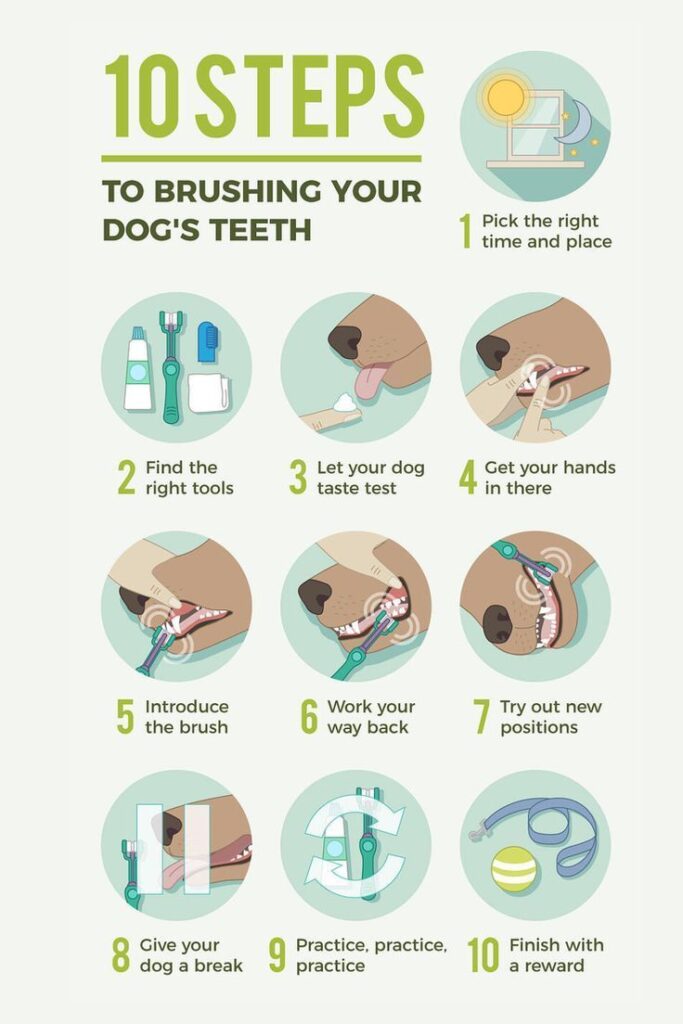
Save for Your Pet’s Future
It is not cheap to have a pet’s teeth cleaned. But it is necessary to be the best pet owner. Think of the cost now as an investment in the future to avoid higher veterinary costs later on. In addition, cleanings can identify other issues, such as broken teeth, misalignment of teeth, tumors or cysts, and abscesses.
Do you have a rainy day, college fund, or vacation account? Consider keeping a separate (never touch) “Furever Friend” savings account. These days, some local credit unions and banks offer higher-interest savings accounts (with some restrictions and fees, so read the fine print) just for pet savings. Setting aside funds for your pet will help ensure they get the care they need to live a long healthy life.
